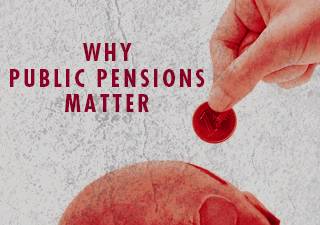Media

Pension Cost Conundrum: Cut Teachers or Raise Taxes?
A recent report released by the Thomas B. Fordham Institute estimates Philadelphia School District (SDP) pension payments will total $349 million by 2020, which is a 378 percent increase from what the state and school district had to pay in 2011. That’s a rise of about $1,900 per student. And this pension spike doesn’t just threaten the SDP but school districts all across the Commonwealth.
The report lays out the worst case scenario for the SDP, which serves as a warning to the rest of the state:
When the figures are compared to the district’s likely revenues in 2020, we find that supporting this rise in retirement costs could require SDP to cut as much as $283.9 million—13.0 percent of its spending—on other items. If SDP chose to meet the burden of rising retirement costs by raising the student-to-teacher ratio, it would require eliminating 3,077 (out of 9,227) teacher positions, effectively adding eight students per teacher, from sixteen to twenty-four. If SDP chose, instead, to meet the rise in retirement costs by reducing other components of teachers’ compensation, that drop would need to exceed $30,000 by 2020.
The Commonwealth Foundation estimates that under current law, annual taxpayer contibutions will increase by nearly $1,000 per household to fund pension liabilities for both public school employees and state employees.
The report also touches on Act 120 of 2010. One myth (and there are many) surrounding the public pension crisis is Act 120 solved our problems, but the Fordham Institute puts this myth to rest:
Pennsylvania enacted significant pension reform in 2010, cutting benefit accruals for new hires by 25 percent. However, unlike the other two states we examine (Ohio and Wisconsin), the cuts did not make a dent in Pennsylvania’s rising retirement costs. This is because that rise—coming over the next few years—is due to the deferred funding of benefits previously earned, not the cost of benefits for new hires (which take many years to phase in).
For Pennsylvania to avoid school program cuts and higher taxes on working families, we need real pension reform now. For solutions to our pension crisis, visit Principles for Public Pension Reform.